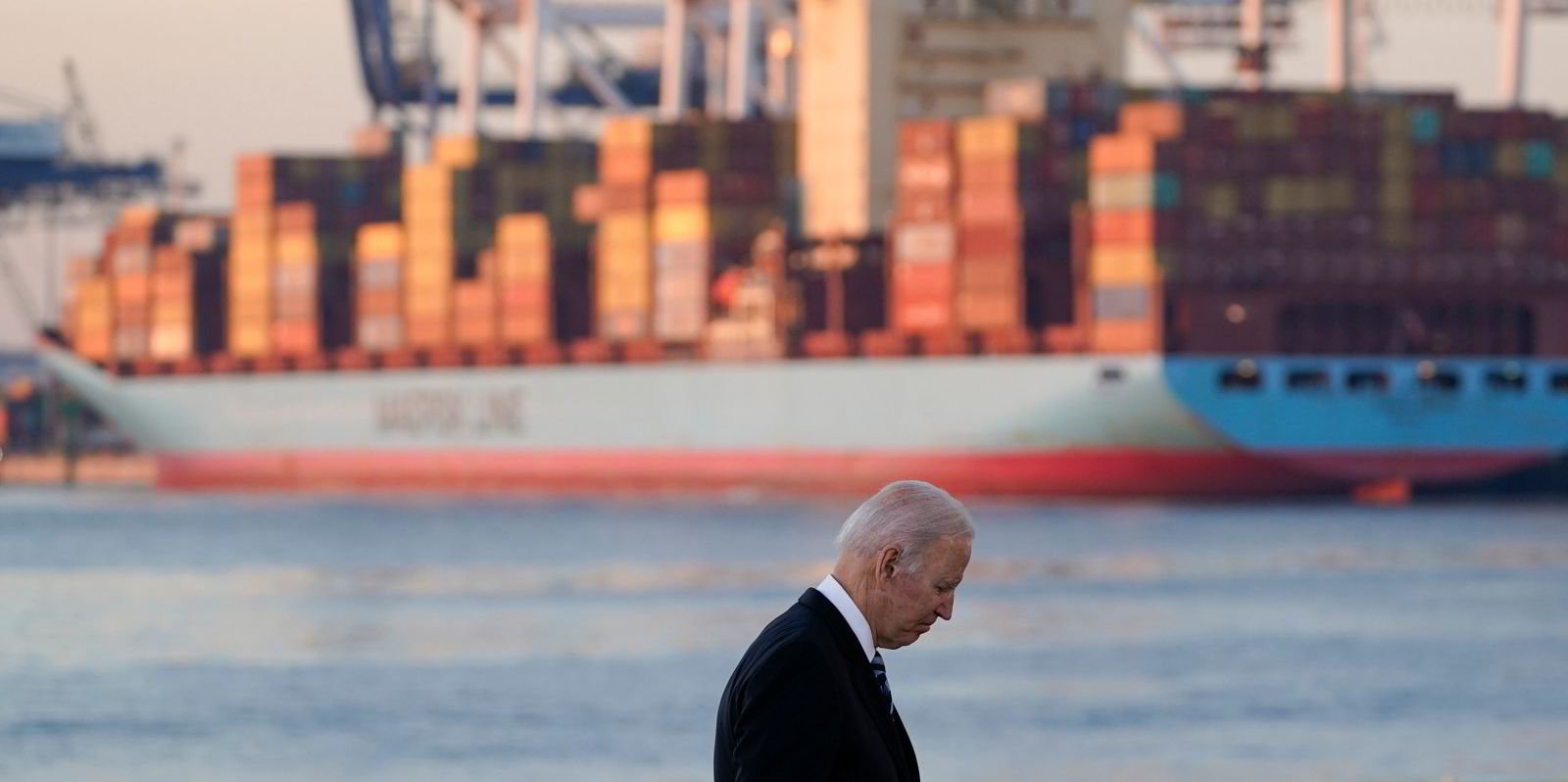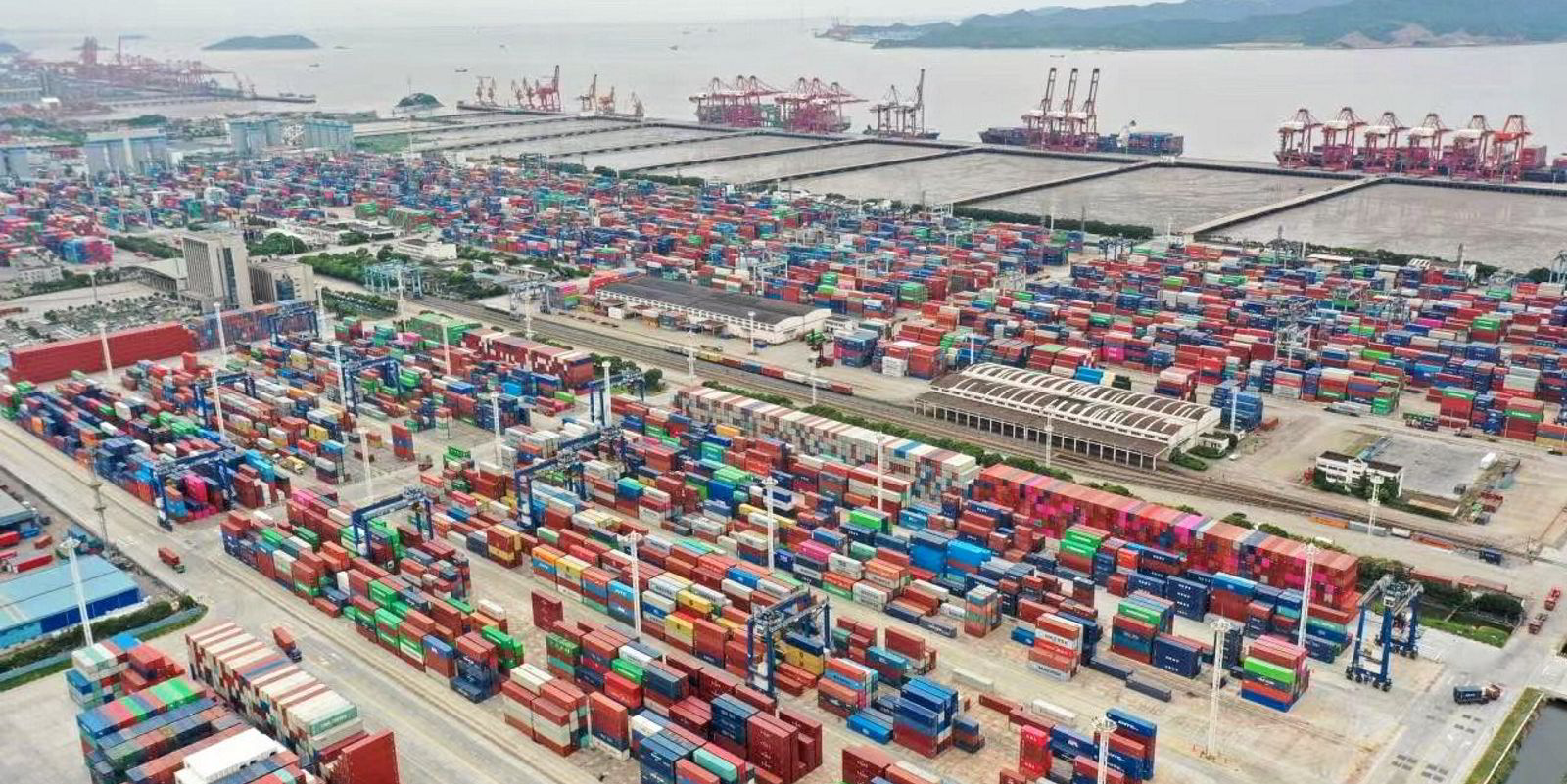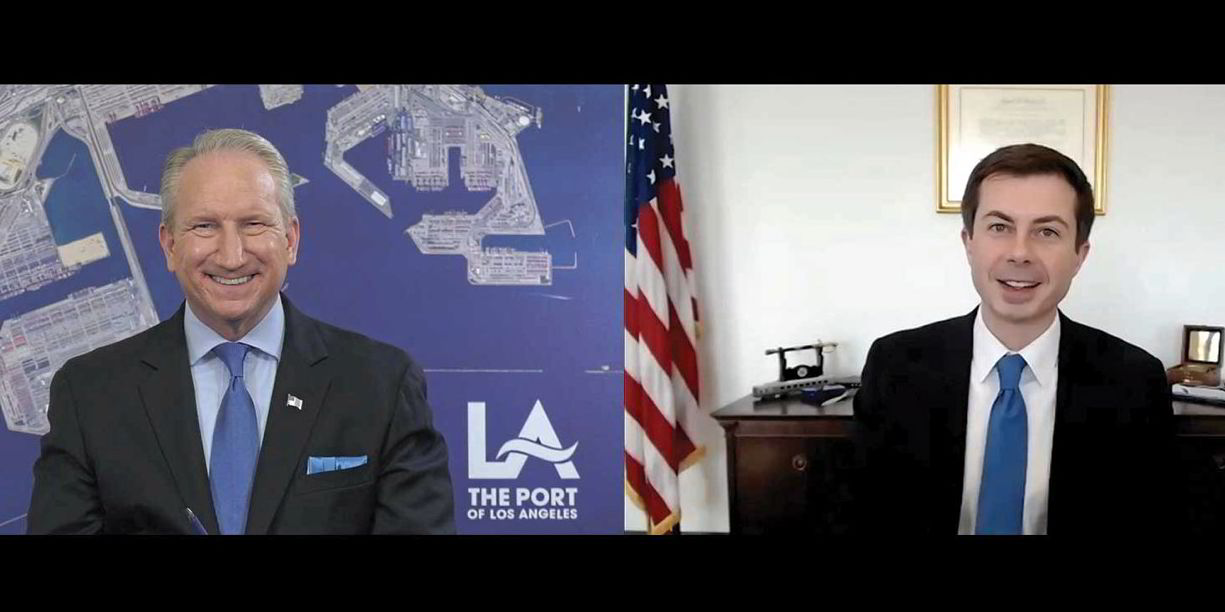The Port of Los Angeles plans to spend hundreds of millions of dollars on improving its workforce and infrastructure after Covid-19 revealed that it must be able to handle many more containers.
Pandemic-driven supply-chain disruption left the US' largest port overrun last year with thousands of boxes of Chinese goods that importers could not pick up fast enough.
Dozens of boxships waited for weeks in San Pedro Bay for open berths at the port, and the nearby Port of Long Beach — the country's second-biggest — causing jams all the way back to Asia.
Millions of Americans ordered huge numbers of products online in 2020 and 2021 while cooped up in their homes under lockdown, exacerbating an unprecedented predicament.
In the end, Covid-19 made it clear that the Port of Los Angeles' container capacity and workforce capability come up woefully short in handling present day consumer volumes.
"The Covid pandemic put that issue into stark relief," David Libatique, deputy executive director of stakeholder engagement, told TradeWinds.
"It's the lessons we've gleaned over the past year-and-a-half kind of boiled down into about four different buckets."
The first "bucket" entails creating a better workforce by investing $150m in the nation's first good movements training campus on 15 acres (six hectares) within the port.
"We want to make sure that throughout the end-to-end supply chain over the goods movement system, we have adequate supply and sufficiently trained workforce," he said.
"We know that this is an area that needs dedicated attention."
The campus, which is getting $110m of the $2.3bn in California's spending on port infrastructure, will feature classrooms and bays where workers can learn how to maintain and repair equipment.
"It'll have simulators with actual ship-to-shore cranes, as well as container stacks and other cargo-handling equipment," Libatique said.

The second "bucket" involves building a $50m, 80-acre "flex" area on the port's Terminal Island to store overflows of full and empty containers to allow uninterrupted unloading and loading of ships.
"The pandemic just created a new huge swing in import cargo and we had a system that could not adapt to that," he said.
The future site will feature a tunnel or overpass so that trucks can access the space without impeding trains that encircle it.
The port plans to invest $20m upgrading its Port Optimiser technology to allow terminal workers to identify incoming cargo before it arrives and then plan accordingly.
It will seek that money from the state's $1.2bn transport budget and $17bn in federal money earmarked for improving ports.
The optimiser, installed in 2017, allows workers to receive incoming cargo data from ships two weeks before they arrive, but it does not give any visibility on what cargo owners are doing, he said.
"Terminals are actually fairly blind as to when a cargo owner is going to dispatch a truck to get to the terminal to pick up a loaded container or drop off an empty," Libatique said.
Lastly, the port will seek money from California's $857m zero-emissions budget and federal funding to buy carbon-free trucks.
"The community impacts of the congestion have been significant, especially in terms of emissions, so we plan on applying for significant amounts of funding to complement our own funding," he said.
Zero-emission equipment makers want to be assured that ports have trained workforces that can maintain the equipment, Libatique added.
"Under our clean-air action plan, we have a goal of reaching zero-emission drayage trucks by 2035 and zero-emission cargo-handling equipment by 2023," he said.
American Association of Port Authorities (AAPA) chief executive Christopher Connor testified before Congress on 19 January about the crucial roles that US ports play in global trade and defending the country's coasts.
A record number of containers now move through US ports, thanks to longer operating hours and White House action, but they still need $50bn in green infrastructure upgrades, according to the AAPA. This is in addition to spending $31bn per year on port infrastructure to the end of 2025.
America's seaports are investing $31bn in infrastructure each year between 2021 and 2025 to improve facilities.
"The movement of freight off of ports is improving, and it is happening due to extraordinary, collaborative efforts between all supply chain participants, coupled with creative solutions to ease congestion," the AAPA said.









